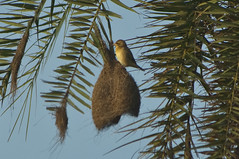Government has announced a plan to build an elevated road connecting the Marina Light House and the East Coast Road (ECR). It has been announced that the proposed plan will improve connectivity between the city and the ECR and will ease traffic mobility. However, as is consistent with most Government plans of such a nature, environmental and aesthetic concerns have been given the go-by.
The entire road in its final form will extend 9.7 km and will be at a vertical clearance of 5.5m. The first phase will be for 4.7 km and will link the Light House on Kamaraj Salai (Beach Road) with Besant Nagar. A consulting agency has submitted its feasibility report and the estimate is that the first phase will cost Rs. 430 crore.
The route will begin from near the Gandhi statue, turn east near the Light House and run along the existing San Thomé Road bypass by the sea up to Srinivasapuram. From there it will cross the Adyar Estuary, run parallel to the broken bridge, pass the Theosophical Society campus and finally connect Besant Nagar near Elliot’s Beach. In the second phase, the elevated road will run along Besant Nagar Beach Road, close to Velankanni Church, and then run parallel to the coast before joining the ECR. Around 500 homes, 14 commercial buildings and three religious buildings will be affected by the plan.
The report does not look at what will happen to the already fragile ecology of the area. It also has not taken into cognisance CRZ guidelines which do not allow for such constructions along the coastline. The broken bridge which this road will pass close to is testimony to the destructive potential of cyclones and high waves in this region – not to mention the corrosive elements. Constructing a road in precisely the same area is nothing short of short-sighted ness.
The proposal will also ring the death knell for the entire Adyar estuary which was in the past considered a bird sanctuary. At present there is an ongoing project to develop what is left of the Adyar Creek as a natural estuarine park. What will the fate of this project be once a road cuts across the park and the estuarine area? The proposed road will affect what is an environmentally important region which has been recogni sed as such by the State and the Centre. The corridor is also to be located in the breeding ground of the Olive Ridley turtle.
The matter is not likely to end here, for it appears to be the opening for further land development. In the past, when the question of constructions close to the coastline near Quibble Island was investigated, the Government granted permission for the development stating that all this was taking place alongside an existing road and so the area did not come under CRZ guidelines. Now with another road being proposed along the sea coast itself, it is more or less certain that in future further reclamation and development will take place along the coast, citing the presence of the elevated road as an excuse. This will play havoc with the coastline and will also create a Shanghai-type of beachfront for the city. The question is, is this what we want?
Not surprisingly, the proposal has come in for scathing comment. The opponents have pointed out that the Government is spending vast amounts on beach beautification quite unnecessarily. If only this amount was spent on cleaning up the city’s waterways and making them navigable there would be ample scope for good connectivity from city centre
to the ECR. Where then would be the necessity for an elevated road? A waterway costs only one tenth of a roadway to maintain and is also more economical when it comes to fuel consumption. It would be the ideal solution for a city already polluted. But the present trend is more towards building massive flyovers and roads, all catering to a motorcar-using population when the majority that uses public transport and would benefit from a waterway is being neglected. When will those in power ever change this trend?
There seem to have been rumours of this since 2006. I came across this article the The Hindu.
Silence over project irks Information Commission

 Photo by Mr Ramanan
Photo by Mr Ramanan Photo by Sripad
Photo by Sripad  Photo by Carthic
Photo by Carthic Photo by Mr Ramanan
Photo by Mr Ramanan Photo by Carthic
Photo by Carthic



 Photos by Sekar
Photos by Sekar





 Brain-fever bird
Brain-fever bird